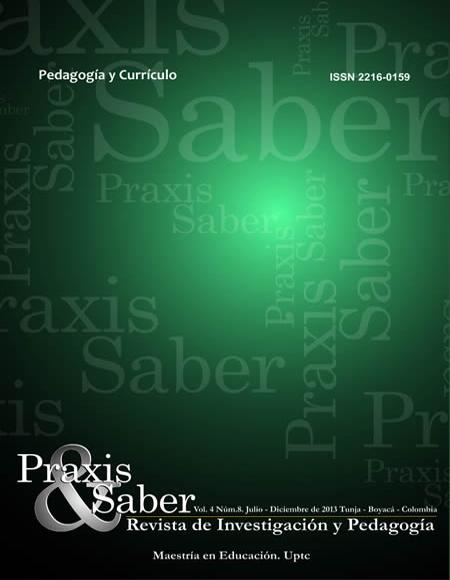Powerpoint and the development of student’s lateral thinking

Abstract
The descriptive use of the slideshow, common in classrooms of the School Victor Manuel Lodoño in Viani, Cundinamarca, gave rise to the concern for inquiring about how this activity would favor the capacity for reflection and creativity of students. With this purpose, a research was conducted, focused on identifying how the use of the PowerPoint program contributes to develop the lateral thinking of student in the seventh grade classroom. Cognitivist theory, research projects on creativity, and qualitative research method, with an ethnographic approach, were taken up again, and guidelines of direct observation and interviews with teachers and students were applied. Finally, it was concluded that PowerPoint favors the development of lateral thinking of students based on the mastery they have of the topics and the program, which allows them to energize the interpretative competence by using drawing tools, expressing flexibility, fluency and originality of new ideas, and different schemes in their works, and proposing solutions to various situations. These advantages were highlighted during the activities for the identification of students’ prior knowledge in collaborative work and tasks, in performing functions assigned individually and in groups, and in the guidance and motivation of teachers.Keywords
Lateral thinking, creativity, flexibility, originality, fluency
References
- Arboleda, J. (2007). Pensamiento Lateral y aprendizaje. Colombia: Cooperativa Editorial Magisterio.
- BARROW, L. (2010). 'Encouraging Creativity with Scientific Inquiry'. Creative Education, [1, 1-6]. Columbia: University Missouri Science Education Center, University of Missouri. Recuperado de http://www.SciRP.org/journal/ce
- https://doi.org/10.4236/ce.2010.11001
- BERNARD, J. (2007). Modelo cognitivo de evaluación educativa. Escala de estrategias de aprendizaje contextualizado. Espa-a: Narcea.
- BONO, E. (1991). Pensamiento Lateral: manual de creatividad. Espa-a: Paidós
- Carabús, O., Freiría, J., González, O. & Scaglia, M. (2004). Creatividad, actitudes y educación. Buenos Aires: Biblos.
- CONTRERAS, O. & DEL BOSQUE, A. (2005). Aprender con estrategia: Desarrollando mis inteligencias múltiples. México: Pax.
- CRUZ, J. (2005). Creatividad, pensamiento práctico, actitud transformadora. Buenos Aires: Pluma y papel.
- Dabdoub, L. (2010). La Creatividad y el aprendizaje: Cómo lograr una ense-anza General. [2 ed.]. Cuenca: Ediciones de la Universidad de Castilla, La Mancha.
- De Avella, M., Pérez, M. & Saravia, L. (2001). Materiales Educativos: Conceptos en construcción. Colombia: Guadalupe Ltda.
- Escamilla, A. (2011). Las competencias en la programación del aula. Educación secundaria. Barcelona: Graó.
- Escribano, G. A. (2004). Aprender a ense-ar. Fundamentos de didáctica conocimiento. Madrid: Ecobook.
- FERNÁNDEZ, C. (2008). Obstáculos que impiden el desarrollo de la creatividad: Temor al fracaso. Recuperado de http://www.padhia.com.mx/noticias/revista_una.php?id=38
- FLORES, V. M. (2004). Creatividad y educación: Técnicas para el desarrollo de capacidades creativas. México: Alfa omega.
- GÚEL, M. (2008). El mundo desde Nueva Zelanda. Técnicas creativas para el profesorado. Espa-a: Graó.
- Hernández, S., Fernández, C. & Baptista, L. (2010). Metodología de la investigación. [5ª ed.]. México: Mc Graw Hill.
- GARCÍA, F. (2008). Motivar para el aprendizaje desde la actividad orientadora. Espa-a: Ministerio de Educación.
- López, M. (1998). Pensamiento crítico y creatividad en el aula. México: Trillas.
- Ministerio De Educación NACIONAL (2006). Estándares Básicos de Competencias, en Lenguaje, Matemáticas, Ciencias y Ciudadanas. Colombia: Revolución Educativa.
- Pérez, C. (1990). Creatividad, ordenador y escuela. Propuestas para el desarrollo de la creatividad. Espa-a: Universidad, Secretariado de Publicaciones.
- RISO, W. (2007). El poder del pensamiento flexible: De una mente rígida a una mente libre y abierta al cambio. Colombia: Norma.
Downloads
Download data is not yet available.